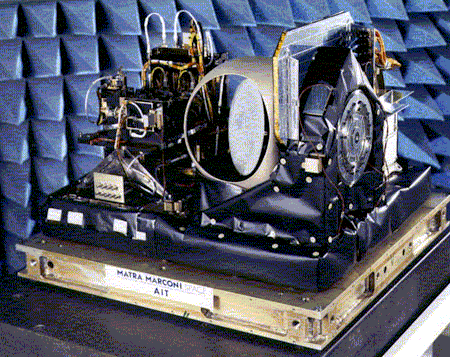
Microwave Humidty Sounder (MHS) The Microwave Humidity Sounder (MHS) is a self-calibrating passive microwave sounder for the measurement of atmospheric water vapour profiles. It determines water vapour content at various depths of the atmosphere. MHS is procured by EUMETSAT. They in-turn are supplying MHS to fly on ESA and NOAA spacecraft. MHS is one of the instruments that form the payload of the METOP and NOAA satellites. The first instrument was launched on 20th May 2005 from the Vandenburg Air Force base in Califonia and is now operating on board the NOAA-N spacecraft (now designated NOAA-18). The first METOP launch took place in 2006. Involved in the design, development and integration of the MHS INstrument On-board Software (MINOS). We provide on-going support to all MHS instruments - those in orbit and those awaiting launch. Although part of the original development team we are now the only provider of software support for MHS. The main functions of the MINOS are: - Motor control - MHS has two counter-rotating motors. The first motor supports the scanning reflector, whilst the second motor drives a compensating flywheel.
- Telemetry gathering.
- Assembly of CCSDS packets for transmission back to ground.
- Instrument health - maintining optimum temperature using thermistors and on-board heaters.
- Fault management.
Facts and Figures: - The MINOS is consists of 10,000 lines of Ada (83) codes, plus some Assembler.
- Cross-compiled using TLD compiler running on a Sun SparcStaion under Solaris, for a 1750 target processor.
- MINOS blown into 48K bytes of PROM.
- MINOS runs in 128K bytes of RAM.
- The MINOS operates on a 2.31ms time slice, interrupt driven, round-robin scheduling system.
Although software development is now complete, Standalone Software continues to provide support for all the MHS instruments. This includes investigating anomalies and where necessary providing run-time machine code patches for the on-board flight software.

|